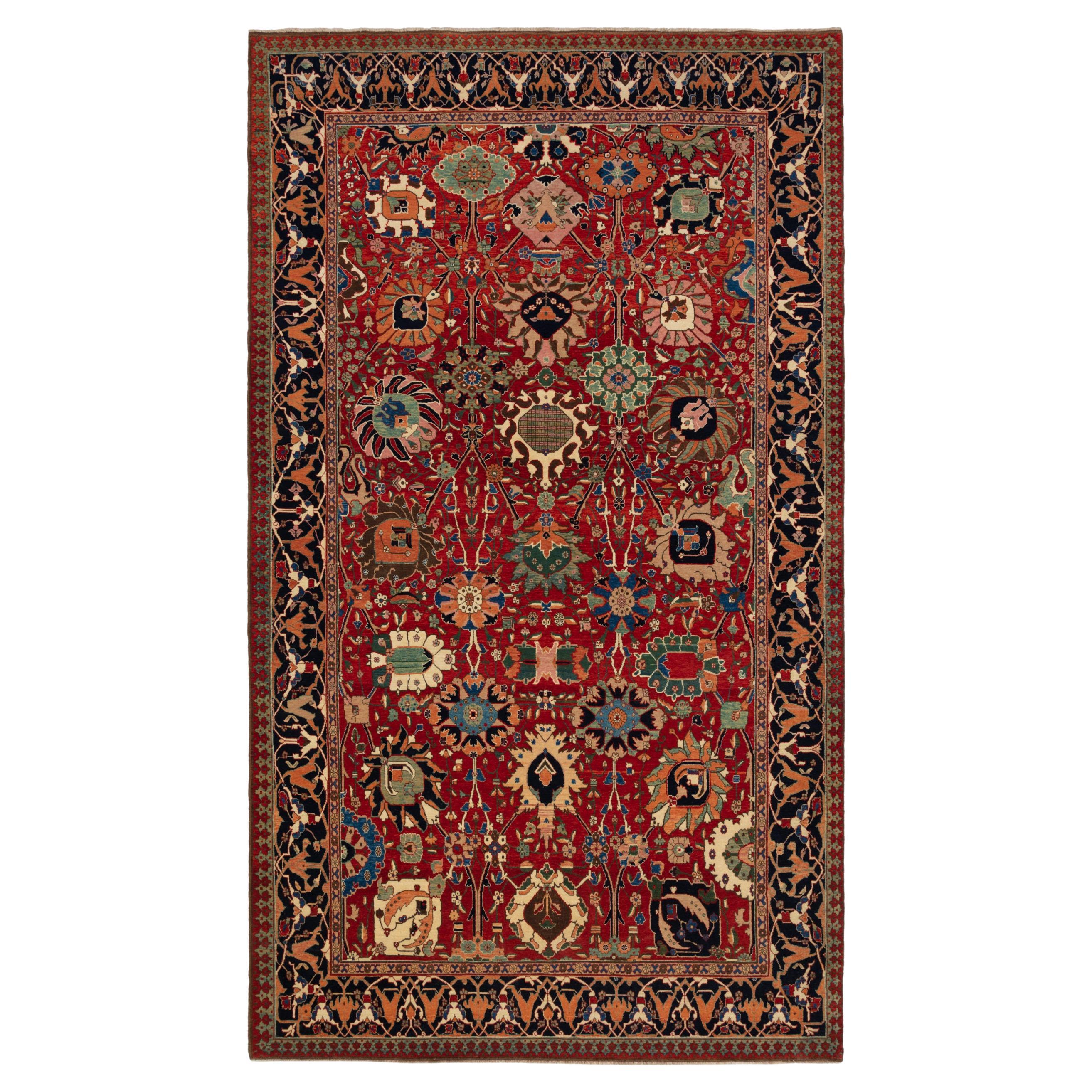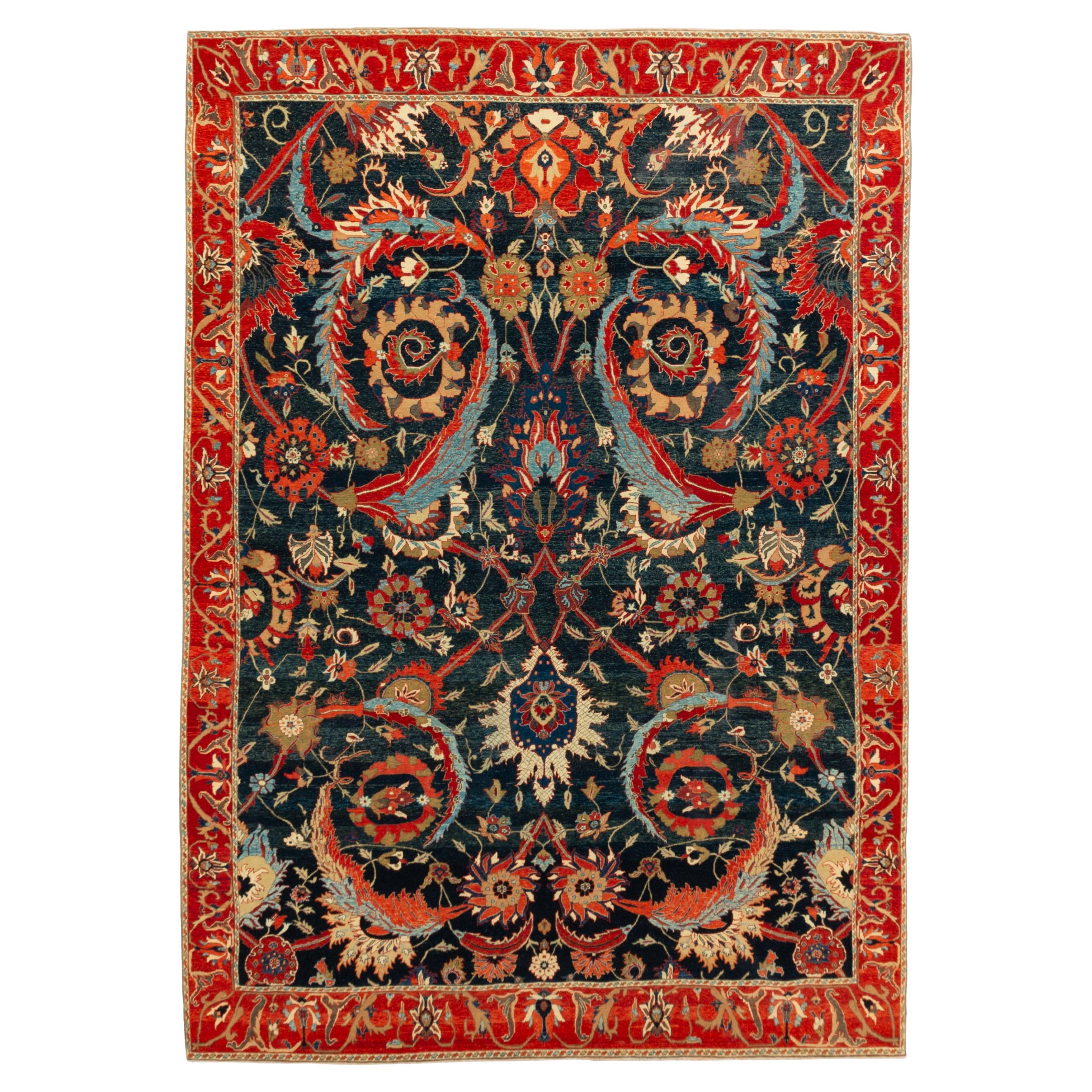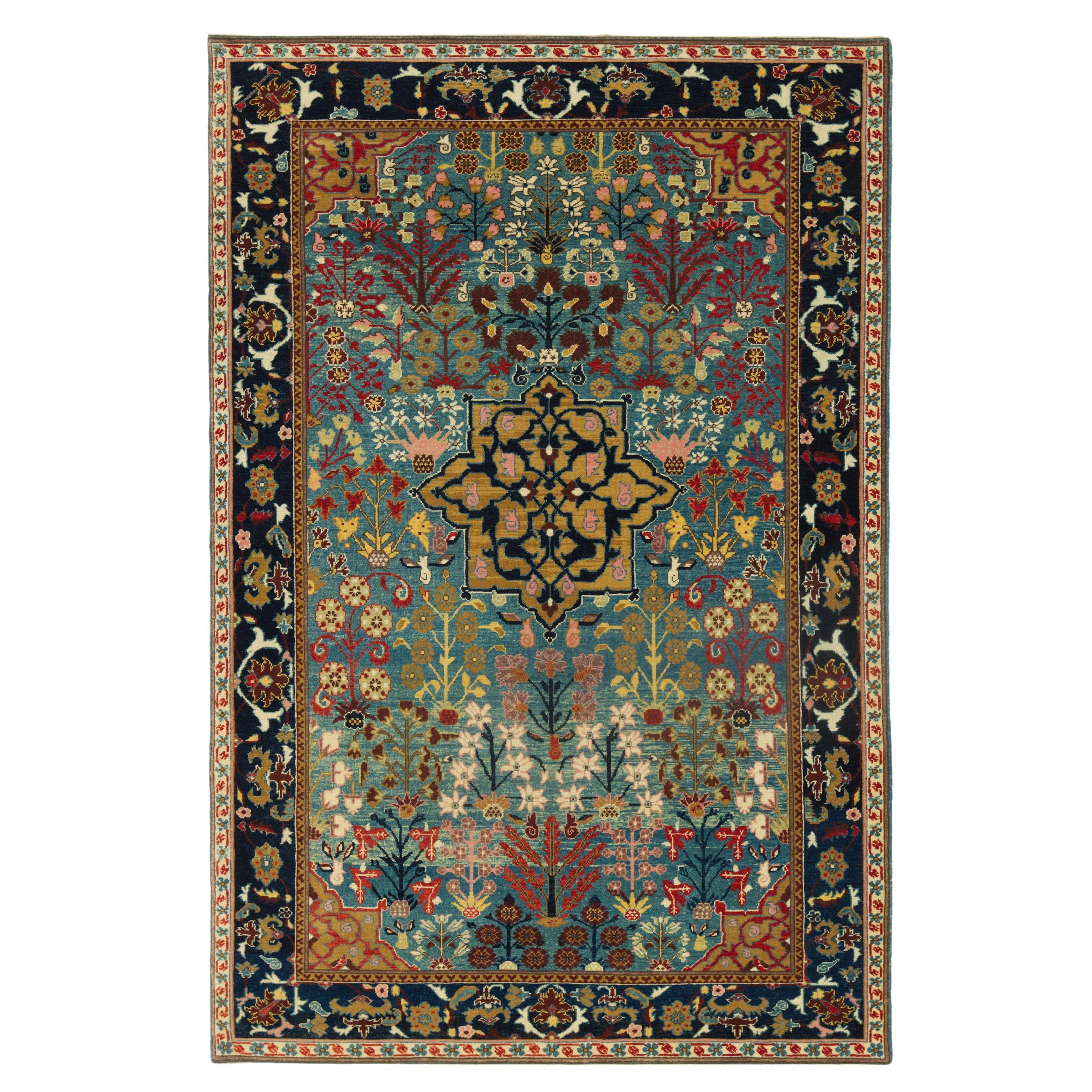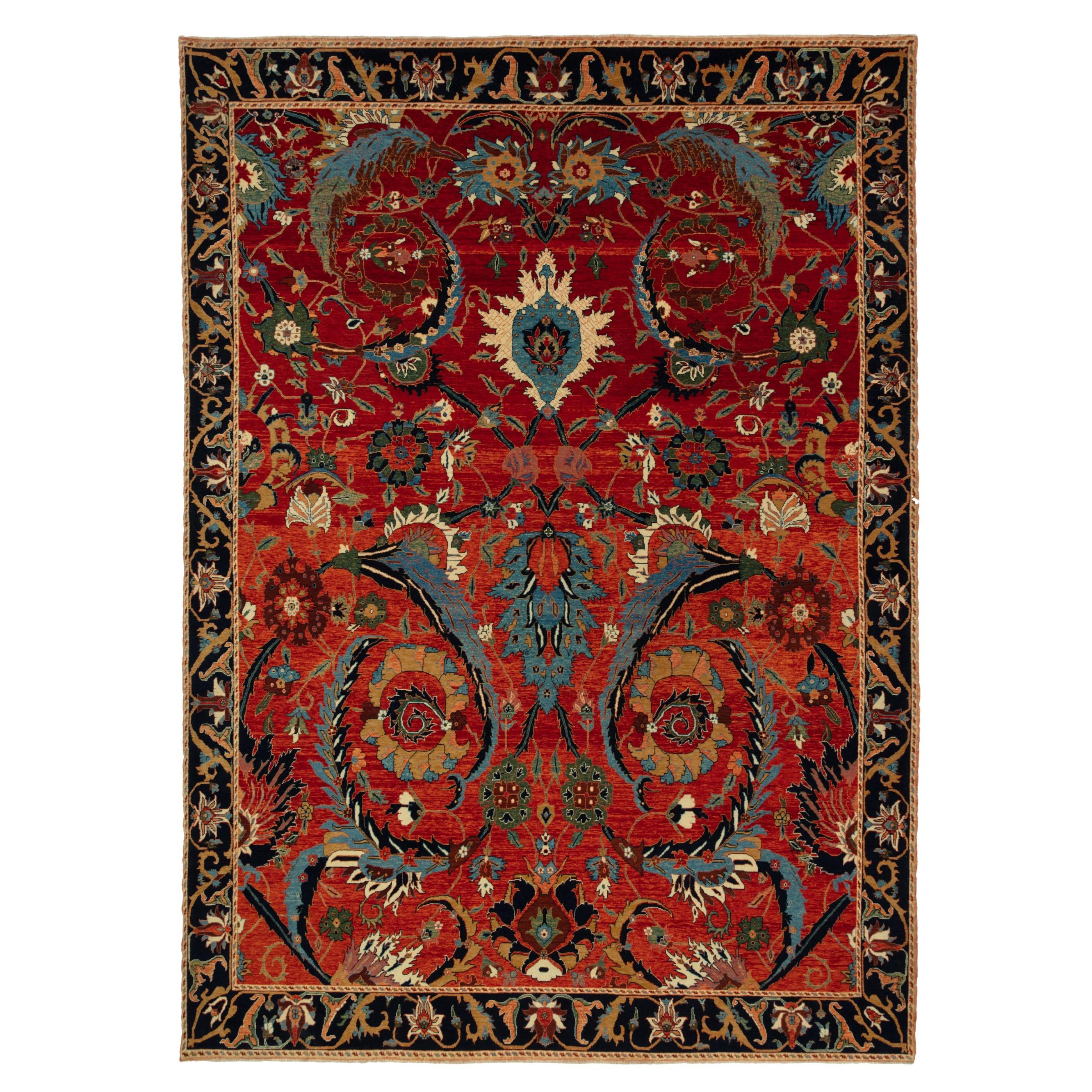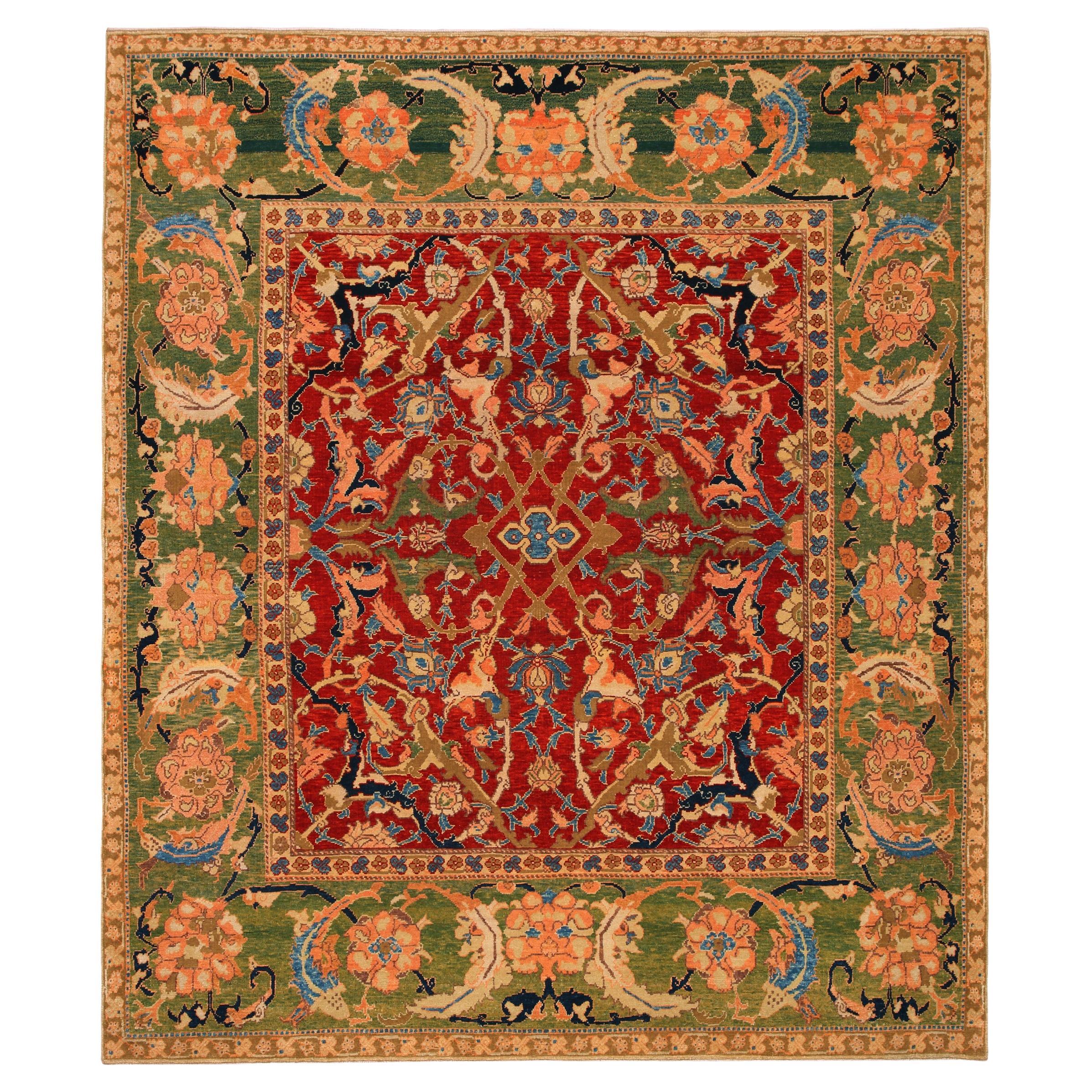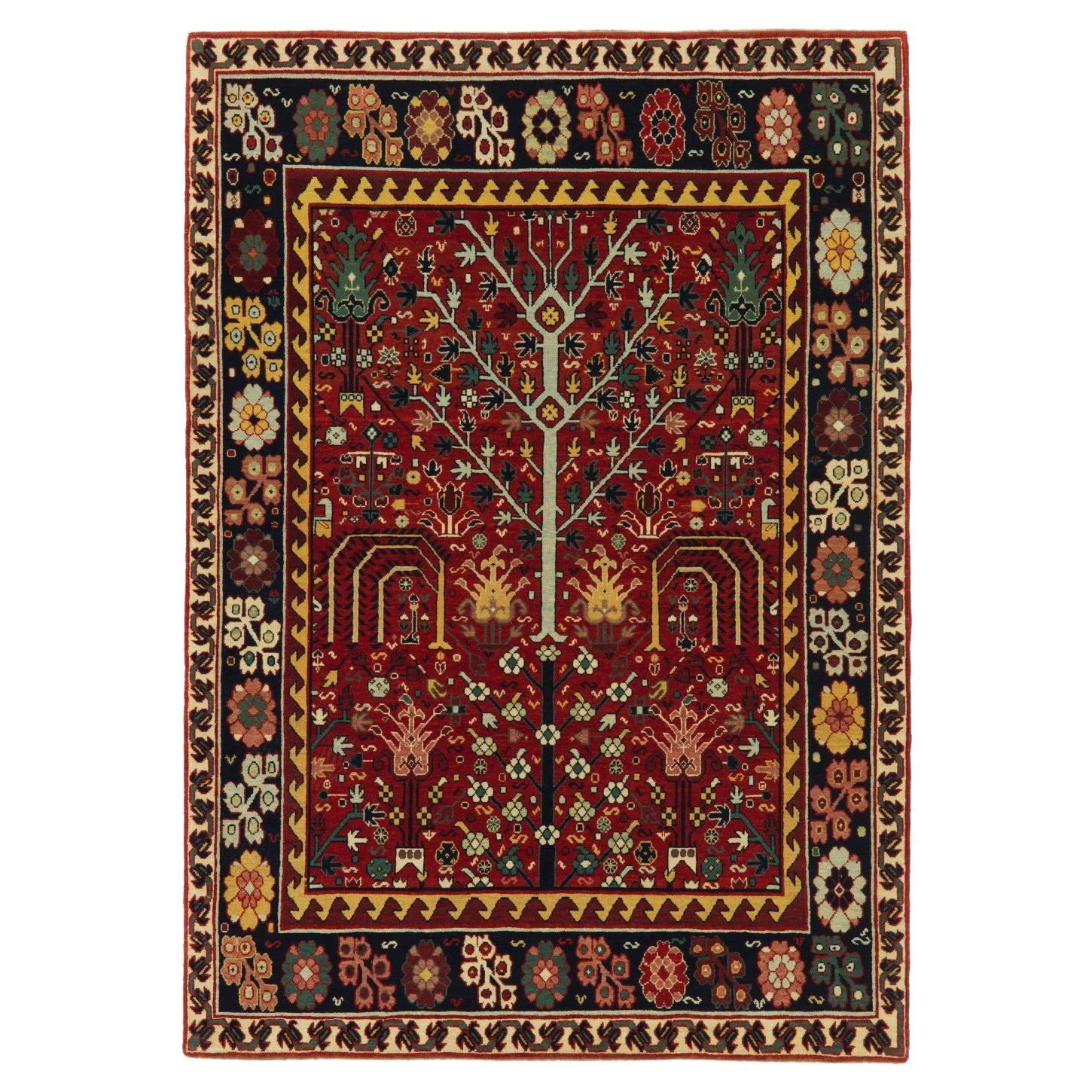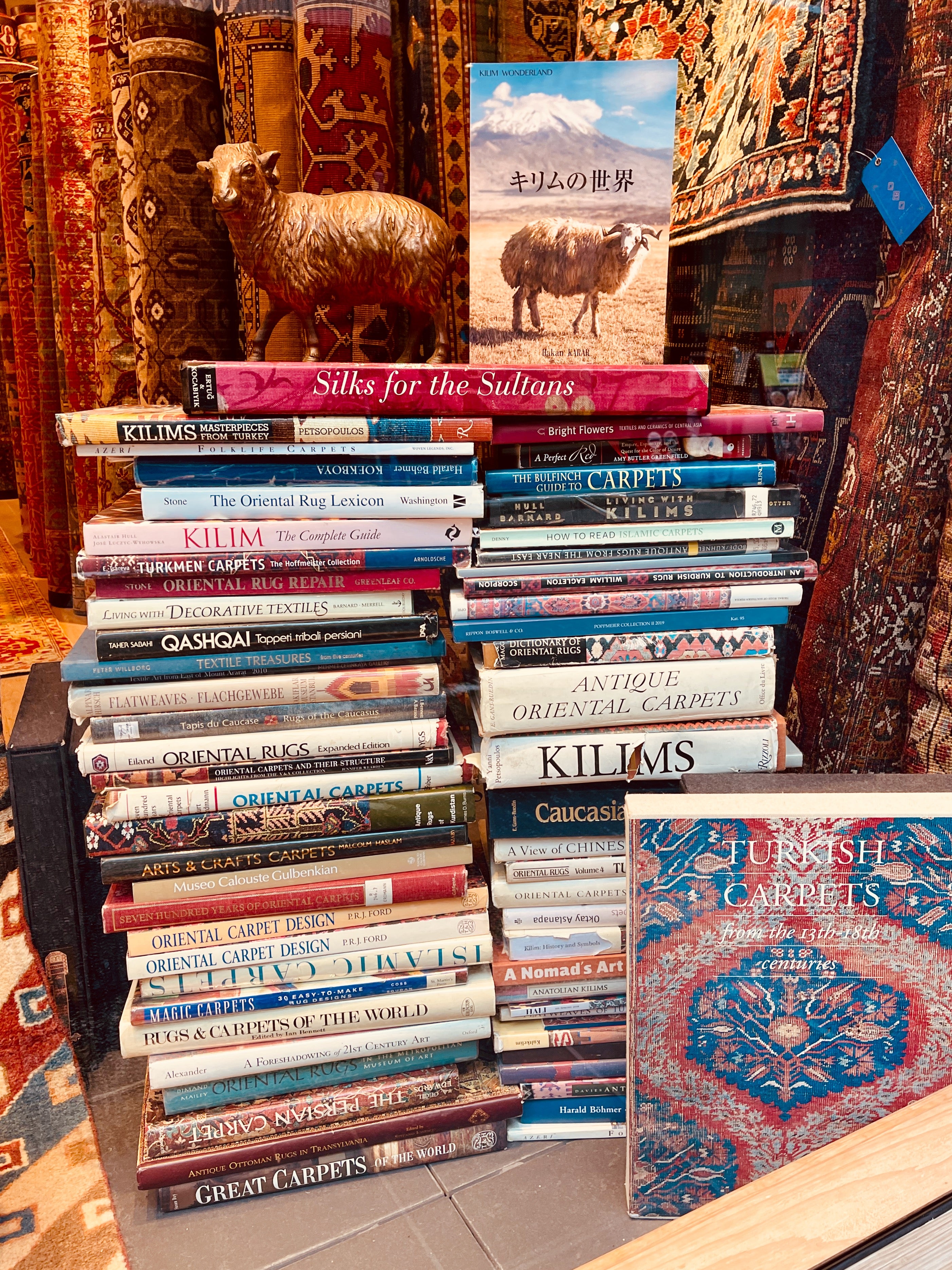Items Similar to Ararat Rugs Kerman Multi-Medallion Carpet 17th Century Revival Rug, Natural Dyed
Video Loading
Want more images or videos?
Request additional images or videos from the seller
1 of 11
Ararat Rugs Kerman Multi-Medallion Carpet 17th Century Revival Rug, Natural Dyed
About the Item
This is an elegant multi-medallion carpet designed 17th century in the Kerman region, Persia. The carpet design shows vigorous rows of eight-pointed star medallions; ornamented with floral forms contrasting with a dark border. A rich assortment of decorative arranged small but vigorous eight-pointed star medallion rows in the field, decorated with vibrant interlacing flower designs. The most appropriate colors to match the original is used for this rug.
Color summary: 9 colors in total, most used 4 colors are;
falu red 552 (madder root – pomegranate)
sunray color 405 (henna)
dark brown 316 (no dye – sheep’s own color)
Russian green 517 (indigo)
Group: South Central Persia Rugs Family
Area: Kerman Region
Material of Pile: natural dyed hand-spun wool
Material warp / weft: wool on cotton
Structure: Symmetrical knot on depressed warp inclining to the right
Knots Density: 50 x 50
Production Place: Southeastern Anatolia – Diyarbakir - Lice
Stock Location: Tokyo
size (EU): 252 X 343cm
size (US): 8'3" X 11'3"
area (EU): 8.6m²
area (US): 93ft².
- Creator:Ararat Rugs (Manufacturer)
- Dimensions:Width: 99.22 in (252 cm)Length: 135.04 in (343 cm)
- Style:Revival (In the Style Of)
- Materials and Techniques:
- Place of Origin:
- Period:
- Date of Manufacture:2020
- Production Type:New & Custom(One of a Kind)
- Estimated Production Time:Available Now
- Condition:
- Seller Location:Tokyo, JP
- Reference Number:1stDibs: LU8206232798252
ARARAT RUGS
We know and believe that the geography we come from, our past, and our lifestyle are the most important bond between us to carry the oriental carpet art and culture to the next generations along with our core values in our ongoing growth journey.
We are aware that the way to achieve this goal and carry this priceless art and culture to the future depends on a lot of work with all our people every day while adhering to our core values.
For us, art is meaningful in the sense that it brings together various cultures around the world. It is an honor for us that oriental carpet art and culture have been instrumental in this for centuries and that we are a part of this business.
We are tirelessly keeping an eye on auction house information around the world about carpets. New York's Metropolitan, London's Victoria & Albert Museums, and other famous art museums, as well as small specialized museums that house private collections, and books about oriental carpets to collect information on outstanding carpet designs and patterns from around the world. It's our Self-improving and Self-developing culture.
As Turkish Culture of Hospitality, the Kurdish Culture of Generosity, and as Japanese Culture of Business Punctuality; are the most important values that this multicultural background has taught and bequeathed to us. It is essential and valuable for us that you feel this feeling not only by looking at our oriental carpets but from the moment you contact us.
About the Seller
5.0
Vetted Seller
These experienced sellers undergo a comprehensive evaluation by our team of in-house experts.
Established in 1970
1stDibs seller since 2023
12 sales on 1stDibs
Typical response time: 1 hour
- ShippingRetrieving quote...Ships From: Tokyo, Japan
- Return PolicyA return for this item may be initiated within 7 days of delivery.
More From This SellerView All
- Ararat Rugs Kerman Vase Technique Carpet 17th Century Revival Rug, Natural DyedBy Ararat RugsLocated in Tokyo, JPThe design source of the carpet comes from the book by Dimand, Maurice S., and Jean Mailey. Oriental Rugs in the Metropolitan Museum of Art. New York: The Metropolitan Museum of Art,...Category
21st Century and Contemporary Turkish Revival Persian Rugs
MaterialsWool, Natural Fiber, Organic Material
- Ararat Rugs Kerman Vase Technique Carpet 17th Century Revival Rug, Natural DyedBy Ararat RugsLocated in Tokyo, JPThe source of carpet comes from the book Museo Calouste Gulbenkian, Printed by Gulbenkian Museum Lisbon, in 2015, nr.52. This is a vase-technique carpet design in the 17th century in the Kerman region, of Persia. In the 16th century, in Safavid Persia, medallion rugs were among the most appreciated, but at the end of the century and the beginning of the next, a taste for decoration with floral motifs, coils, and palmettes gradually emerged, covering the entire field. This is the case, for this example design, with rugs from eastern and southern Persia. Among the latter are the famous vase-type rugs attributed to the Kerman region, to which our design belongs. Considered by some specialists to be quite atypical, this rug made in Persia, probably in Kirman in the time of Shah Abbas (1587-1625), presents, on a dark blue background, an exuberant and dynamic vegetal decoration in which horizontal and vertical rows of palmettes and stand out, due to their dimension and spiral movements, large sickle-shaped leaves, alternating with branches and flowers. The very narrow rim, with a red background, is filled with a frieze of coils and flowers. It’s a famous carpet design as ‘Kerman Vase Technique Rug, The Most Expensive Rug...Category
21st Century and Contemporary Turkish Revival Persian Rugs
MaterialsWool, Natural Fiber, Organic Material
- Ararat Rugs Kerman Vase Technique Carpet 17th Century Revival Rug, Natural DyedBy Ararat RugsLocated in Tokyo, JPThe design source of the carpet comes from the book How to Read – Islamic Carpets, Walter B. Denny, The Metropolitan Museum of Art, New York 2014 fig.18. This is a vase-technique wit...Category
21st Century and Contemporary Turkish Revival Persian Rugs
MaterialsWool, Natural Fiber, Organic Material
- Ararat Rugs Kerman Vase Technique Carpet 17th Century Revival Rug, Natural DyedBy Ararat RugsLocated in Tokyo, JPThe design source of the carpet comes from the book Museo Calouste Gulbenkian, Printed by Gulbenkian Museum Lisbon, in 2015, nr.52. This is a vase-technique carpet design in the 17th...Category
21st Century and Contemporary Turkish Revival Persian Rugs
MaterialsWool, Natural Fiber, Organic Material
- Ararat Rugs Polonaise Carpet, 17th Century Museum Piece Revival, Natural DyedBy Ararat RugsLocated in Tokyo, JPThe source of the carpet comes from the book 'Oriental Rugs in the Metropolitan Museum of Art, by Dimand, Maurice S., and Jean Mailey, The Metropolitan Museum of Art, New York 1973 fig.90.' If the so-called vase-technique carpets represented the triumph of Safavid workshop weaving in the seventeenth century, another group of Safavid carpets, popularly if erroneously known as “Polonaise” or “Polish” carpets, demonstrates the extent to which Safavid weavers would go to create flashy and expensive objects of conspicuous consumption. Polonaise carpets...Category
21st Century and Contemporary Turkish Revival Persian Rugs
MaterialsWool, Natural Fiber, Organic Material
- Ararat Rugs Garrus Bidjar Medallion Carpet 19th Century Revival Rug Natural DyedBy Ararat RugsLocated in Tokyo, JPThis is a central medallion carpet designed 19th century in Garrus ( Gerous or Garus ) region, Eastern Kurdistan area. Garrus is located in the foothills approaching the flatlands of Persia, Garrus has been a significant Kurdish city since antiquity when it was the capital of Media Minor. Important writers, scientists, and politicians from Garrus contributed to the Safavid dynasty, and it was a major commercial center. Garrus was more populous than Senna in the nineteenth century. As it was in the west of Persia, it was fortunate to escape the ravages of the Afghans and to a certain extent the economic incompetence of Nadir Shah. In the eighteenth century, it benefited from the lack of a centralized Persian government bent on collecting high taxes, and from the benign, decentralized rule of the Zands. The brilliant weaving school of Garrus, like that of Senna, did not develop in a vacuum in a process of deus ex machina...Category
21st Century and Contemporary Turkish Revival Persian Rugs
MaterialsWool, Natural Fiber, Organic Material
You May Also Like
- Isfahan Carpet Fragment Rug, 17th CenturyLocated in San Francisco, CAIsfahan Carpet Fragment Rug, 17th Century Isfahan rugs are known for their intricate patterns, often featuring floral and arabesque motifs inspired by...Category
Antique 17th Century Persian Persian Rugs
MaterialsWool
- Antique 17th Century Persian Kerman Carpet. 11 ft 5 in x 20 ft 2 inLocated in New York, NYRare Antique 17th century Kerman vase carpet, country of origin: Persia, circa 17th century. Size: 11 ft 5 in x 20 ft 2 in (3.48 m x 6.15 m).Category
Antique 17th Century Persian Kirman Persian Rugs
MaterialsWool
- Antique Chinese Kangxi Carpet Fragment, 17th CenturyLocated in San Francisco, CAAntique Chinese Kangxi Carpet Fragment Rug, 17th Century Additional information: Dimensions: 3'10" W x 5'3" L Origin: China Period: 17th Century (2nd...Category
Antique 17th Century Chinese Chinese and East Asian Rugs
MaterialsWool
- Blooming Floral Medallion Vintage Persian Kerman Rug with Multi-ColorsLocated in Atlanta, GABlooming Floral Medallion vintage Persian Kerman rug with multi-colors, rug emac-004, country of origin / type: Iran / Kerman, circa 1940s This vintage Persian Kerman rug, circa 1...Category
Vintage 1930s Persian Kirman Persian Rugs
MaterialsWool
- Mid-20th Century Large Persian Kerman Carpet, Soft Tones, Center MedallionLocated in New York, NYA thick pile, "American" style Kerman, with an open old ivory Sub-field carrying a lobed ogival medallion on a conforming leafy filigree field, within a pale green border.The influen...Category
Mid-20th Century Persian Kirman Persian Rugs
MaterialsWool
- Late 19th Century Lavar Kerman CarpetLocated in Closter, NJThe city and province of Kerman is geographically isolated in the great desert of southern Persia. An industry of both shawl and carpet production has flourished there since the Safa...Category
Antique Late 19th Century Persian Kirman Persian Rugs
MaterialsWool, Cotton
Recently Viewed
View AllMore Ways To Browse
Star Ornament
Russian Ornaments
Vegetable Ornament
Pakistani Bokhara Carpet
Black And White Stripe Runner
Mountain Goat Rug
Pakistan Bokhara Rug
11x15 Vintage Rug
Heriz Rug 8 X 11
Karastan Rug
Vintage Bijar
Serpent Rug
Persian Esfahan
Garrus Rug
Antique Cotton Ornaments
Karastan Rugs Used
Karastan Wool Rug
Karastan Wool Rugs Used
